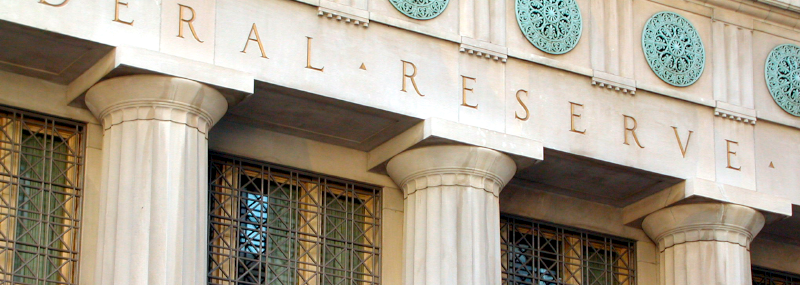Key takeaways
- The Federal Reserve has lowered a key interest rate by a half point.
- The rate cut is intended to stimulate the economy and support stock prices.
- The rate cuts may have a variety of impacts on different parts of the bond market.
While the timing of the Federal Reserve's most recent decision to cut the federal funds rate may have surprised some, bond markets have been expecting a cut for a while. "Markets had been pricing in anywhere from 2 to 4 rate cuts starting this month," says Beau Coash, Institutional Portfolio Manager with Fidelity's fixed income division. The Fed's decision to cut rates by a half point weeks earlier than its scheduled March 17-18 meeting is intended to offset ongoing uncertainty around the impact of the coronavirus on the global economy that has rattled stock markets around the world.
By cutting rates, the Fed is intending to lower the cost of borrowing money and to stimulate economic activity at a time when fear of the virus is threatening to curtail economic growth. The hope is that consumers and companies will respond to lower rates as they often do by spending and investing more and by refinancing home mortgages and corporate debt. An increase in those activities could help avoid the type of slowdown that took place in China after widespread quarantines were put in place to help contain the virus after it emerged at the end of 2019.
At least initially, the Fed rate cut did not comfort the US stock market. The S&P 500 dropped 2.8% the day of the “emergency” rate cut. Whether additional monetary and fiscal stimulus can forestall an economic slowdown and revive the stock market remains to be seen. But it’s worth noting that over 12-month periods, rate cuts have historically been better for stocks when the business cycle is in an earlier phase rather than the late cycle, where we have been since the fourth quarter of 2018, according to Fidelity's Asset Allocation Research Team.
So, it’s a good time to take stock of your capacity to absorb short term losses, and make sure your long-term mix of stocks, bonds, and cash is in synch with your goals, risk tolerance, and when you will need the money.
A day in the sun for high-quality bonds
While virus anxiety has produced a sharp drop in stocks since the S&P 500 reached a record high in February, the effects on bonds have varied so far. "US Treasury yields have come down and prices have risen as investors seek shelter in high-quality bonds," says Coash. Indeed, Treasurys are attracting money from around the world as investors seek shelter in what are still among the highest-yielding, high-quality government bonds available.
That's helping core bond portfolios that combine Treasury and high-quality corporate bonds to continue to play their traditional role as counterweights to stock market volatility and diversifiers of investors' portfolios. Historically, when stock prices have fallen, investment-grade bonds' yields have also fallen and their prices have risen, helping to offset losses from stocks for investors who had allocated assets to bonds as well as stocks in their portfolios.
That familiar relationship between stocks and bonds had shown signs of breaking down during 2019 when stocks, high-yield, investment-grade, and Treasury bonds all gained in value. In early 2020, high-quality bonds are back to providing ballast to portfolios.
Supply and demand for corporate bonds is also at a crossroads. "Companies have slowed down their issuance of new bonds because of reduced demand due to market conditions. That shows how everybody is pretty much waiting to see what happens," he says.
Not all bonds are created equal
If the rate cuts can boost economic growth, it could help issuers of lower-rated bonds. "For lower-rated companies in challenged industries, lower economic activity could make it difficult for them to maintain appropriate liquidity," explains Coash. "Bondholders could become fearful that those companies would not be able to maintain dividend payments or meet financial obligations like paying suppliers and paying interest to bondholders." But if stimulus spurs economic growth, high-yield bonds could benefit.
Lower US rates also may help bonds from emerging market countries that had been feeling the effects of the virus. The health of their economies is closely tied to the level of economic activity in China, where widespread quarantines remain in place.
More cuts ahead?
The greatest unknown is whether more cuts are coming. Over the past weeks, the bond markets had been expecting the Fed to cut as few as 2 times and as many as 4 times this year. Whether more rate cuts take place or not, this move to lower rates represents a change of direction for the Fed which was widely expected to keep rates steady this year after lowering them several times in 2019.
We’ll be monitoring the rate outlook carefully. For our latest perspective, read Viewpoints, and to research funds, ETFs and individual bonds to meet your needs, use our online screeners.













